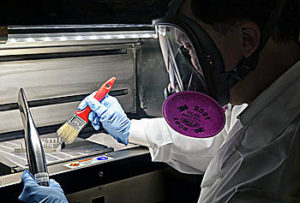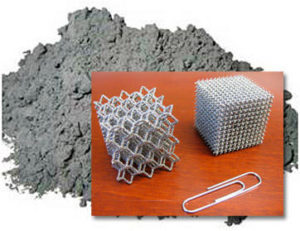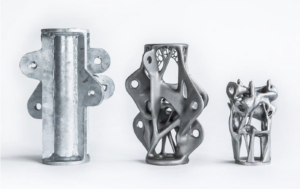By Gregg Profozich, Director, Advanced Manufacturing Technologies, California Manufacturing Technology Consulting (CMTC)
Click here to read part 1 of this blog series, a “go-to” additive manufacturing guide.
 In our last post we explored Additive Manufacturing, also known as 3D printing, is. We also explored 5 potential benefits to Rhode Island manufacturers such as reduced development costs, less product waste, or even making you more attractive to younger skilled workers.
In our last post we explored Additive Manufacturing, also known as 3D printing, is. We also explored 5 potential benefits to Rhode Island manufacturers such as reduced development costs, less product waste, or even making you more attractive to younger skilled workers.
If you’re deciding whether additive manufacturing is right for your company, there are several factors to consider.
5 Considerations to Make Before Implementing This Manufacturing Technology
As with the implementation of any substantial change in your manufacturing process, there are several factors to consider and explore before bringing new technology into your company.
1. Recognize the Mindset Change Associated With Additive Manufacturing
While additive manufacturing is a powerful tool for manufacturers, the effective use of additive manufacturing requires a change in mindset for design engineers and company managers. Additive manufacturing goes against many of the principles that most design, mechanical, and industrial engineers learn in school.
For example, traditionally, sheets of metal have traditionally been used as raw material for a metal fabrication process. These sheets are laser cut to produce a shape. The job of design engineers has been to order the right size of steel sheet and design the program to optimize the nesting of parts within that sheet to minimize scrap. The less steel taken away, the lower the scrap costs, and the higher the profits.
 In the case of additive manufacturing, rather than focus on reducing the amount of material removed from a process, you build a product up, adding material where needed or taking it away in the design phase to produce a part. So, instead of cutting a shape out of a sheet of steel, you build up the same part using a 3D printer. If you don’t like the shape or features, simply change the model and print another one! Once you have a design that you like, you can print off as many copies as you need.
In the case of additive manufacturing, rather than focus on reducing the amount of material removed from a process, you build a product up, adding material where needed or taking it away in the design phase to produce a part. So, instead of cutting a shape out of a sheet of steel, you build up the same part using a 3D printer. If you don’t like the shape or features, simply change the model and print another one! Once you have a design that you like, you can print off as many copies as you need.
As you can see, the design mindset is flipped on its head when additive manufacturing is involved. The considerations shift from reducing the amount of material taken away to optimizing the part design and then building a part, one by one.
2. Learn
There are some simple and relatively inexpensive ways to retrain your design engineers to work with 3D printing technologies.
Many universities and community colleges have developed additive manufacturing programs. These can range from degree specializations and certificate programs to additive manufacturing workshops and seminars.
Additive manufacturing events also provide opportunities for engineers and company managers to learn more about the technology, which is critical for any significant process change.
3. Read
Magazines, such as Make Magazine, are published to showcase examples of 3D materials and provide comparisons between printer models so you can select the right one for your company. The internet also contains a wealth of data on additive manufacturing and 3D printing. Our website has an entire section devoted to additive manufacturing information and resources.
4. Network
 Ask around and connect with local manufacturers who are using 3D printing. Learn how they utilize its features and optimize its capabilities.
Ask around and connect with local manufacturers who are using 3D printing. Learn how they utilize its features and optimize its capabilities.
Manufacturers networks, the local chamber of commerce, and events are places where you may be able to find others using the technology.
5. Experiment
The cost of personal and desktop 3D printers has gone down dramatically as more models are introduced and competition increases in this market. A desktop mini-printer can be purchased for as little as $500. If you are considering incorporating additive manufacturing into your operations, purchase one or a few and provide them to your engineers, as Ford Motor Company does.
There is no better way to learn about the technology and change the mindset than by letting the designers and engineers play with the technology.
Once the capabilities of Additive are better understood by your designers and engineers, identifying the right industrial-grade Additive technology for your company’s needs will be far easier.
New technologies can be scary, but they can also be exciting! The promise of additive manufacturing in the next five years is thrilling, from the production of custom, functioning prostheses to the use of 3D printing in the majority of elementary school classrooms and homes.
Maximize Your Investment in Additive Manufacturing with Polaris MEP & the MEP National Network
 What if you don’t know how to use a 3D printer? When additive manufacturing first came to the market, there were only a few resources to assist manufacturers in using the technology, and those that existed tended to be very expensive. Now, there are many free or inexpensive ways to acquaint your company with additive technology and possible applications to your situation.
What if you don’t know how to use a 3D printer? When additive manufacturing first came to the market, there were only a few resources to assist manufacturers in using the technology, and those that existed tended to be very expensive. Now, there are many free or inexpensive ways to acquaint your company with additive technology and possible applications to your situation.
The MEP National Network sponsors additive manufacturing webinars, which include presentations from experts and resources in the field of additive manufacturing.
Polaris MEP also partners with New England regional organizations on educational events about additive manufacturing. These programs are frequently available for Rhode Island manufacturers to join at their convenience, and at no cost!
As the demand for customized parts continues to rise, additive manufacturing processes will continue to become more and more relevant in the future. AM equipment manufacturers are predicting that as more companies begin to adopt these technologies, it is only a matter of time before the future of manufacturing is completely transformed.
Polaris MEP recognizes the importance of this path forward and is here to help you transform your manufacturing company with additive manufacturing. Contact us to learn more!
About the Author
Like Polaris MEP, California Manufacturing Technology Consulting (CMTC) is part of the Hollings Manufacturing Extension Partnership (MEP) Program.
Gregg Profozich serves as Director, Advanced Manufacturing Technologies for the CMTC. He is a manufacturing, operations and technology executive who believes that manufacturing is the key creator of wealth in the economy and that a strong manufacturing sector is critical to our nation’s prosperity and security now, and for future generations.
